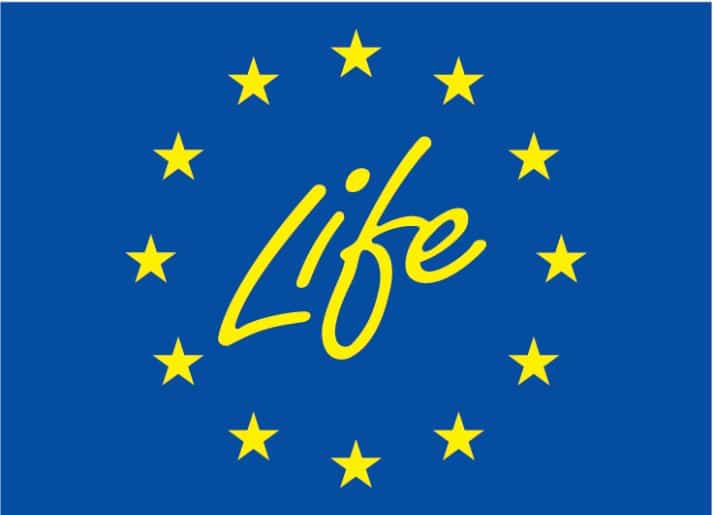Is the reformed Emissions Trading System fit for the new EU climate ambition?
This is the second installment of the Topic of the Month: is emissions trading fit for Europe’s net zero objective?
Just a month ago, the reform of the EU Emissions Trading System (EU ETS) was published in the Official Journal in the form of two Directives: the Directive (EU) 2023/959 on the EU ETS & Directive (EU) 2023/957 on the inclusion of the maritime sector in the EU ETS. After two years of negotiations, the EU ETS is set to support the EU in reaching carbon neutrality by 2050, in line with the objective of the EU Climate Law (Regulation (EU) 2021/1119) of reducing emissions by 55% by 2030 compared to 1990.
Does this reform release EU ETS full potential in contributing to reach Europe’s carbon neutrality objective? The second installment of the Topic of the Month series provides some initial elements to the discussion: the fundamentals of its design are confirmed (1), and its scope is extended to support the decarbonisation of the whole economy (2). Nevertheless, the cap-and-trade system on its own does not suffice for the new climate ambition. It will have to be accompanied by new mechanisms to counterbalance some challenges the EU faces with high carbon prices (3). But will this be enough (4)?
1. The fine-tuning of the fundamentals of the EU ETS
Overall, this reform of the EU ETS is not considered a major reform compared to previous ones, as it mostly confirms the design features already in place without modifying them. The cap of the cap-and-trade programme remains and has even been set to decrease faster and faster over time, despite the recent geopolitical shocks and political pressure on the future of energy and climate policies: this can already be considered a success. The target for greenhouse gas (GHG) emission reduction covered by the EU ETS has been increased from 43% to 62% by 2030 in the sectors covered by the EU ETS compared to 2005. In the new Directive, the Linear Reduction Factor (LRF, i.e., the annual reduction of cap on emissions) nearly doubles from the previous 2.2% to 4.3% in 2024 and 4.4% in 2028 until the end of Phase IV.
Moreover, the Market Stability Reserve’s temporary measures are extended to become permanent features of the EU ETS: the 24% intake rate to be added to the reserve will be prolonged until 2030. In addition, a smoother intake of allowances into the MSR would be enabled to avoid a threshold effect (Galdi and Ferrari, 2022).
2. The scope extension of the EU ETS
Besides the industry and power sector, the whole economy also needs to decarbonise, and the EU opted for emission trading as the core element for decarbonising the other sectors. At sea, emissions from the maritime sector will be gradually included in the EU ETS from 2024 onwards. This will consist of all emissions from boats docking in EU harbours from intra-EU voyages and 50% of emissions from non-EU international trips. Similarly, in the air, all the intra-EU flights will be regulated under the EU ETS, while international flights leaving and departing from the EEA will have to surrender offsets to comply with the Carbon Offsetting and Reduction Scheme for International Aviation (Galdi and Ferrari, 2022).
In addition, a separate emission trading system (ETS 2) will be set up for fuel combustion for road transport, heating of buildings and some fuels of small industries. Although households and car drivers ultimately emit GHG emissions covered by the ETS 2, fuel distributors will be the regulated actors complying with the new obligations. Overall, the sectors covered by the ETS 2 will have to lower their emissions by 42% in 2030 compared to 2005. The LRF of this ETS 2 will be set at 5.10% from 2024 and 5.38% from 2028. The cap and surrender of emission allowances would be fixed in 2027 after the monitoring and reporting period. However, the ETS 2 may be delayed to 2028 if energy prices are exceptionally high.
3. New mechanisms to mitigate negative impacts of carbon pricing
Achieving carbon neutrality requires more stringent climate policies that may lead to higher carbon prices in jurisdictions with an ETS, affecting industries, end-users and households. This pushed the EU policymakers to propose new mechanisms to better address policy gaps and negative impacts of the EU ETS.
Already before the energy crisis and increased tension with Russia, pricing carbon emissions of road transport and buildings raised concerns regarding the distributional impacts on households, micro-enterprises, and transport users. To alleviate the effects on consumers, the EU established a Social Climate Fund (Regulation (EU) 2023/955) that amounts to € 65 billion and increased from at least 50% to 100% the share of ETS auction revenues to be used for energy and climate purposes (Borghesi and Ferrari, 2022). Moreover, it will anticipate some auctions to finance some objectives of RePower EU in the short run. Several safeguards to control the prices in the EU ETS 2, including a cap on the price of the allowances, are also implemented to avoid a rapid and strong increase in prices in the EU ETS 2.
The risk of carbon leakage will also be tackled with an alternative to the traditional free allocation of allowances currently in place in the EU. This new tool is the Carbon Border Adjustment Mechanism (CBAM), which according to the European Commission aims “to put a fair price on the carbon emitted during the production of carbon-intensive goods that are entering the EU, and to encourage cleaner industrial production in non-EU countries”. Since the phase-in of the CBAM (Regulation (EU) 2023/956) aims to address this issue of carbon leakage, the free allocation of ETS allowances will be gradually phased out from 2026 to 2034 for sectors covered by CBAM.
4. Will this be enough?
In a way, this shows that the EU ETS remains the cornerstone of the EU climate policy but is now complemented by other mechanisms to speed up the action and bridge some gaps in the regulation.
At the current pace of reduction (i.e., with the current LRF and automatic cancellation of allowances in the MSR), some researchers expect there will be no allowances in the system by 2039 (Pahle et al, 2023). This is much earlier than the 2050 deadline and just around the corner in terms of policymaking. While regulated companies and traders may be incentivised to bank allowances in view of that event, policymakers should start thinking about the so-called ETS “endgame”. Solutions to the disappearance of ETS allowances include revising the cap and rethinking the EU ETS’s fundamentals regarding products to trade and the geographical scope of the emissions reductions. For instance, it can imply integrating with other carbon pricing mechanisms (e.g., the EU ETS 2, offsets or another ETS) or emitting new allowances corresponding to negative emissions.
Still, current prices are insufficient to trigger the investment efforts needed to reach carbon neutrality. In addition, Member States are also responsible for decarbonising the economy, and emissions of certain sectors, agriculture being the first in line, are still out of the scope of this market-based instrument.
Climate ambition and the energy crisis: the EU ETS at a crossroads
This article builds upon a recent interview with Milan Elkerbout for the Spot on Climate podcast series.
Dive deeper
- EU Emissions Trading System (EU ETS), DG Climate Action, European Commission. Available at: https://climate.ec.europa.eu/eu-action/eu-emissions-trading-system-eu-ets_en
- Borghesi, S. and A., Ferrari (2022), Social impact of emissions trading systems: auction revenues and social expenditures in a changing world, Policy Briefs 2022/54, Florence School of Regulation. Available at: https://hdl.handle.net/1814/75009
- Galdi G. and A. Ferrari (2022), 2.2. The EU Emission Trading System (EU ETS), in Hancher, L., Meeus, L., Nouicer, A. and V. Reif (ed.), The EU Green Deal: 2022 edition, Technical Report 2022/06, Florence School of Regulation. Available at https://hdl.handle.net/1814/75156
- Pahle, M., Günther, C., Osorio, S. and S. Quemin (2023), The Emerging Endgame: The EU ETS on the Road Towards Climate Neutrality. Available at http://dx.doi.org/10.2139/ssrn.4373443







